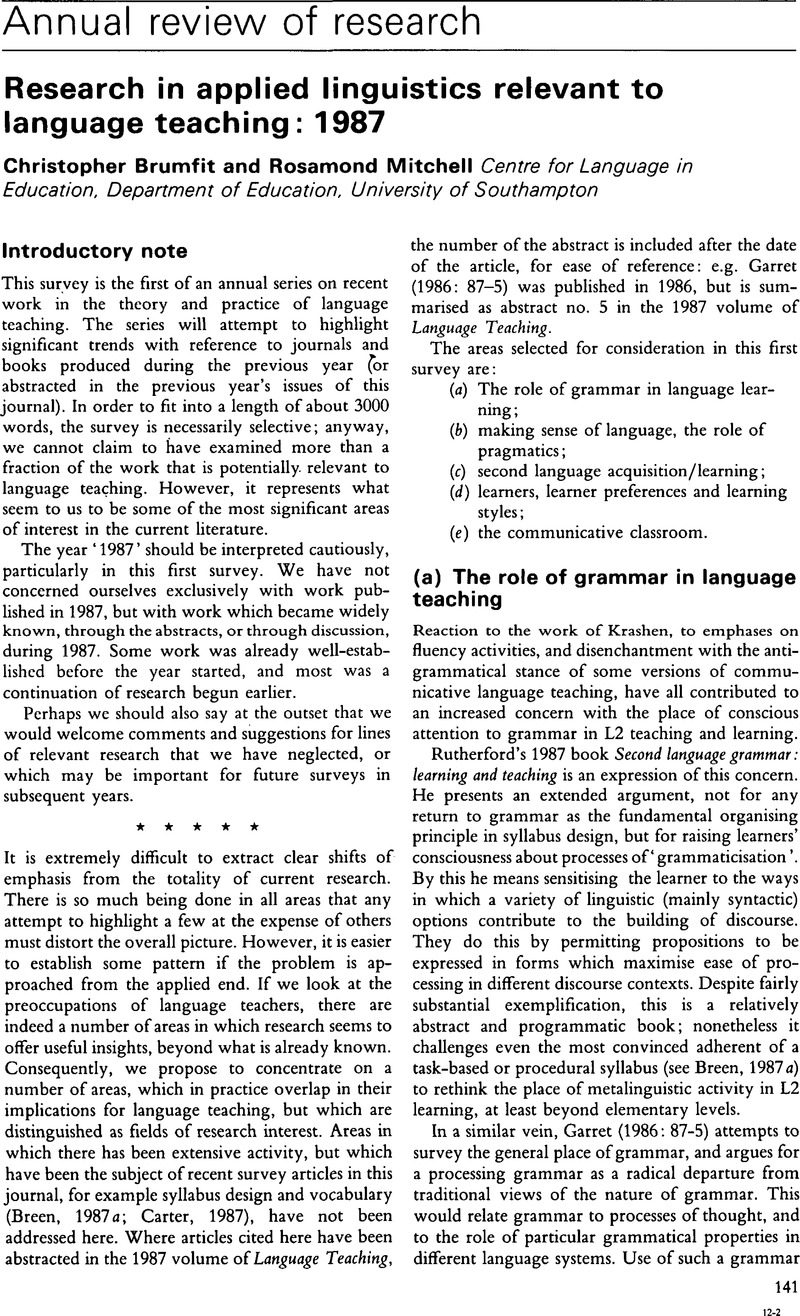Crossref Citations
This article has been cited by the following publications. This list is generated based on data provided by Crossref.
Mitchell, Rosamond
and
Brumfit, Christopher
1991.
Research in applied linguistics relevant to language teaching: 1990.
Language Teaching,
Vol. 24,
Issue. 3,
p.
137.
Mohammed, Abdelmoneim M.
1995.
Grammar instruction in language development: Rationale and technique.
Language Awareness,
Vol. 4,
Issue. 1,
p.
49.


